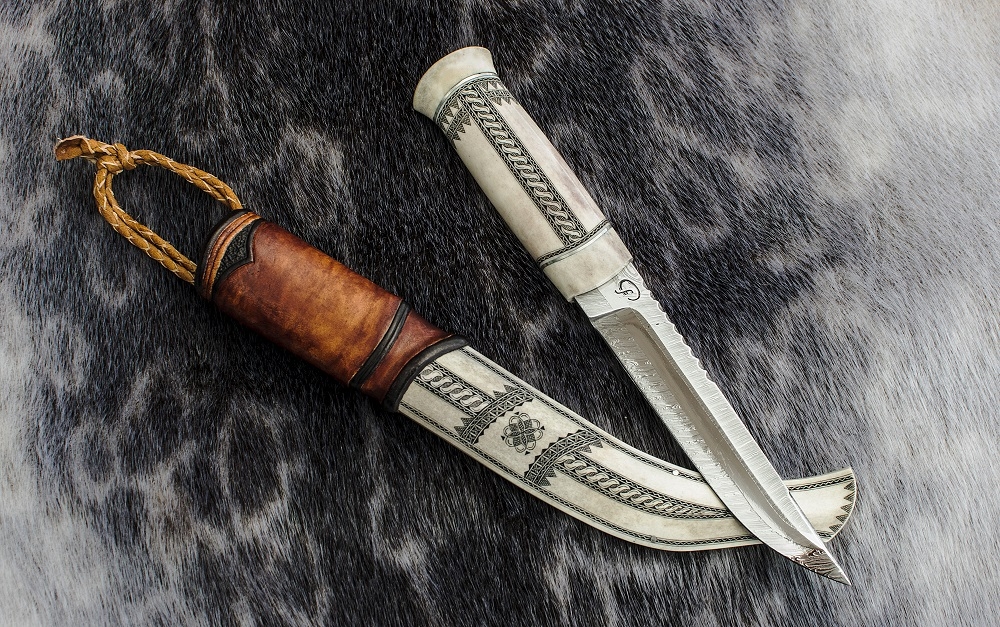The Art and Craft of Recreating Knives: Blending Tradition with Modern Innovation

The Art and Craft of Recreating Knives: Blending Tradition with Modern Innovation
In the world of craftsmanship, few items hold the allure and mystique of a well-crafted knife. From ancient blades forged by skilled blacksmiths to modern marvels of engineering, knives have evolved alongside humanity, serving as tools, weapons, and symbols throughout history. Recreating knives is not just about replicating their forms; it's about preserving tradition while embracing innovation.
Honoring Tradition:
The art of recreating knives is deeply rooted in tradition. Many traditional knives are not only practical tools but also cultural artifacts, embodying centuries of craftsmanship and heritage. For artisans dedicated to recreating these blades, meticulous attention to detail is paramount. They study historical records, pore over museum collections, and often apprentice under seasoned craftsmen to learn the techniques passed down through generations.
Whether it's the graceful curve of a Japanese katana, the rugged durability of a Viking seax, or the intricate patterns of a Damascus blade, each style has its own story to tell. Recreating these knives isn't just about replicating their physical attributes; it's about capturing the essence of their cultural significance and the craftsmanship of their makers.
Embracing Innovation:
While tradition forms the foundation of knife recreation, modern artisans are not bound by the constraints of the past. Advancements in metallurgy, materials science, and manufacturing techniques have opened up new possibilities for innovation. From high-performance alloys to cutting-edge forging methods, modern recreations of knives can surpass their historical counterparts in terms of durability, sharpness, and functionality.
One area where innovation has made significant strides is in the realm of customization. With the advent of computer-aided design (CAD) and precision machining, artisans can create knives tailored to individual preferences with unparalleled precision. Whether it's incorporating ergonomic handles for better grip, experimenting with new blade geometries for improved cutting performance, or adding decorative elements through intricate engraving or inlay work, the possibilities are endless.
Bridging the Gap:
In the world of knife recreation, there is a delicate balance between tradition and innovation. While some purists may insist on adhering strictly to historical methods and materials, others see value in pushing the boundaries of what's possible. Ultimately, the goal is not to replicate the past verbatim but to pay homage to it while embracing the opportunities afforded by the present.
One of the most exciting aspects of recreating knives is the sense of community it fosters. Whether it's through online forums, local guilds, or international expos, artisans and enthusiasts come together to share knowledge, exchange ideas, and celebrate their shared passion for bladesmithing. This sense of camaraderie transcends geographical boundaries and cultural differences, uniting people from all walks of life under a common love for the craft.
Conclusion:
The recreation of knives is a timeless pursuit that blends the rich tapestry of tradition with the cutting-edge innovation of the modern age. From ancient swords to contemporary EDC (everyday carry) knives, each blade tells a story of craftsmanship, culture, and human ingenuity. By honoring tradition while embracing innovation, artisans ensure that the art of blade making continues to thrive and evolve for generations to come. Whether you're a seasoned bladesmith or a novice enthusiast, there has never been a more exciting time to be a part of this vibrant community.
- Arts
- Business
- Computers
- Jocuri
- Health
- Home
- Kids and Teens
- Money
- News
- Recreation
- Reference
- Regional
- Science
- Shopping
- Society
- Sports
- Бизнес
- Деньги
- Дом
- Досуг
- Здоровье
- Игры
- Искусство
- Источники информации
- Компьютеры
- Наука
- Новости и СМИ
- Общество
- Покупки
- Спорт
- Страны и регионы
- World


